The high altitude race that brought so much to Nepal and to its racers in turn has run its last.

Words by Laura Martin
The Yak Attack race in Nepal is the highest mountain bike race in the world. Racers climb to the staggering height of 5,416m over 260km along the Annapurna Circuit. Or should I say, it was the highest mountain bike race in the world. It had been on my bucket list for years, so when it was announced that 2023 would be the final Yak Attack it was time to give it a go. Run as a not-for-profit race, it had seen a decline in participants and an increase in running costs, meaning the race was no longer viable.
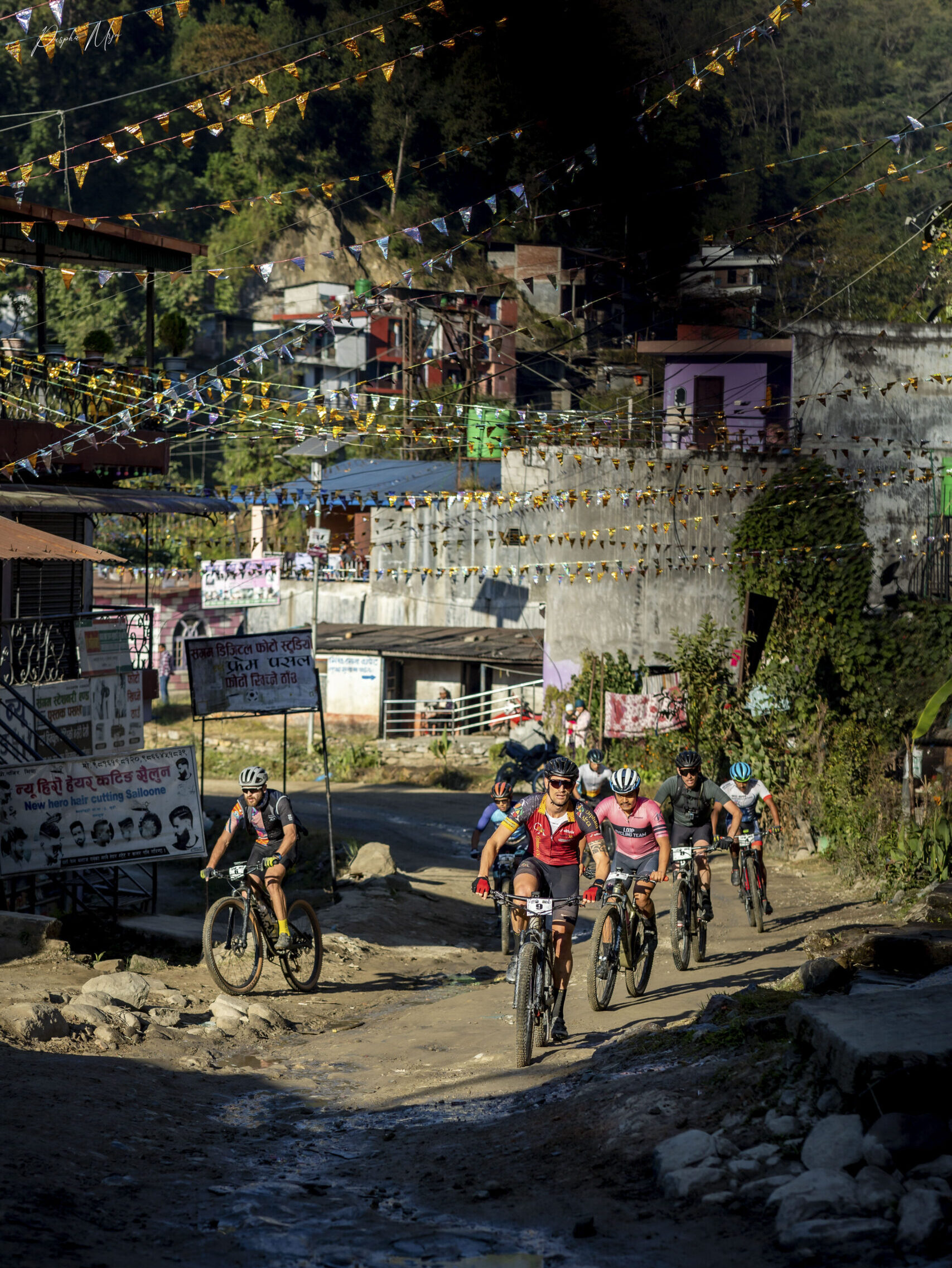
It was now or never. A quick discussion ensued with my husband, Hugo, who would be racing with me. He confirmed his attendance with an “Aye, why not!”, and so it was agreed we would head to Nepal. More at home on the local muddy trails in Fort William than on massive cross-country rides, I would have to prepare for a total change of scene.
Latest Singletrack Merch
Buying and wearing our sustainable merch is another great way to support Singletrack
During the 15 years of the Yak Attack, the mountain biking scene in Nepal has transformed. When the race started, there were only two small bike shops in Kathmandu. Now there are over 20, and they stock some of the biggest mountain biking brands. Gone are the days of only a handful of Nepali cross-country riders – local races can now have up to 100 competitors. There is also an increase in enduro and downhill riders and trails being built. This year a new pump track opened in Kathmandu. The mountain biking scene here is growing and expanding. But mountain biking is a very expensive sport in Nepal – the country’s top mountain bike athletes are unable to get sponsorship and rely on the Yak Attack Foundation, which supports them in racing and supplies much-needed bikes and kit.
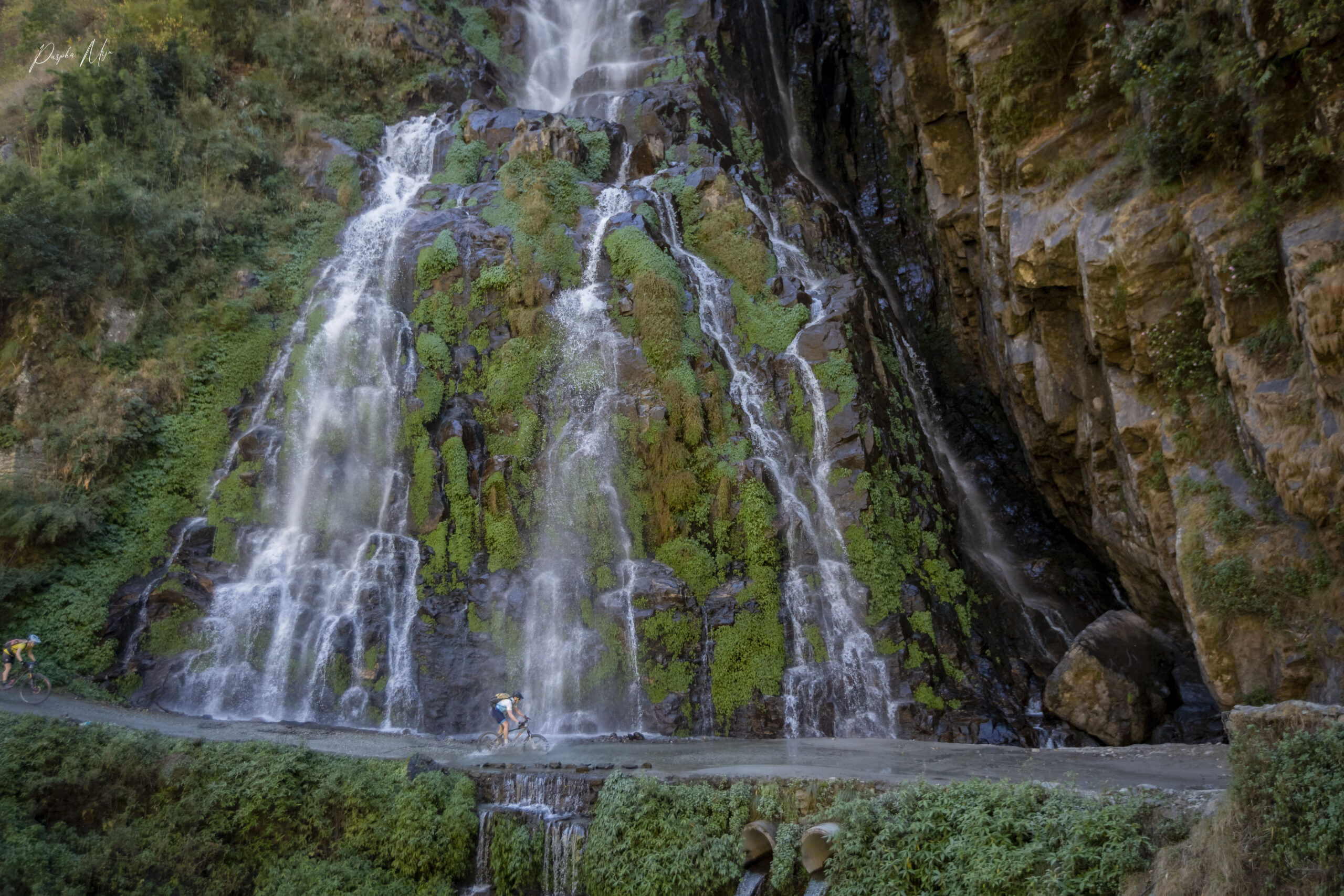
Getting ready to attack the Yak
This last running of the race had 26 entrants: 14 international racers from all over the world and 12 Nepali racers ranging in age from early 20s to over 60s. For the first year ever, six of these racers were female.
After a long bus journey on some dubious jeep tracks, we arrived in Besisahar. I got my first glimpse of the Himalayan mountains I’d be spending the next ten days racing around. They did not disappoint, snow-covered and magnificent with all their jagged edges. At the start line the following morning, it was already 30°C. Stage 1, a big loop starting and ending in the village, took us on a climb up to 1,032m on a rocky, gravelly jeep track. We passed small houses built on the hillside and a beautiful thick jungle filled with wildlife. Villagers stood outside their homes shouting encouragement, excited to see all the racers. Such support for mountain bikers here was something I had never come across before.
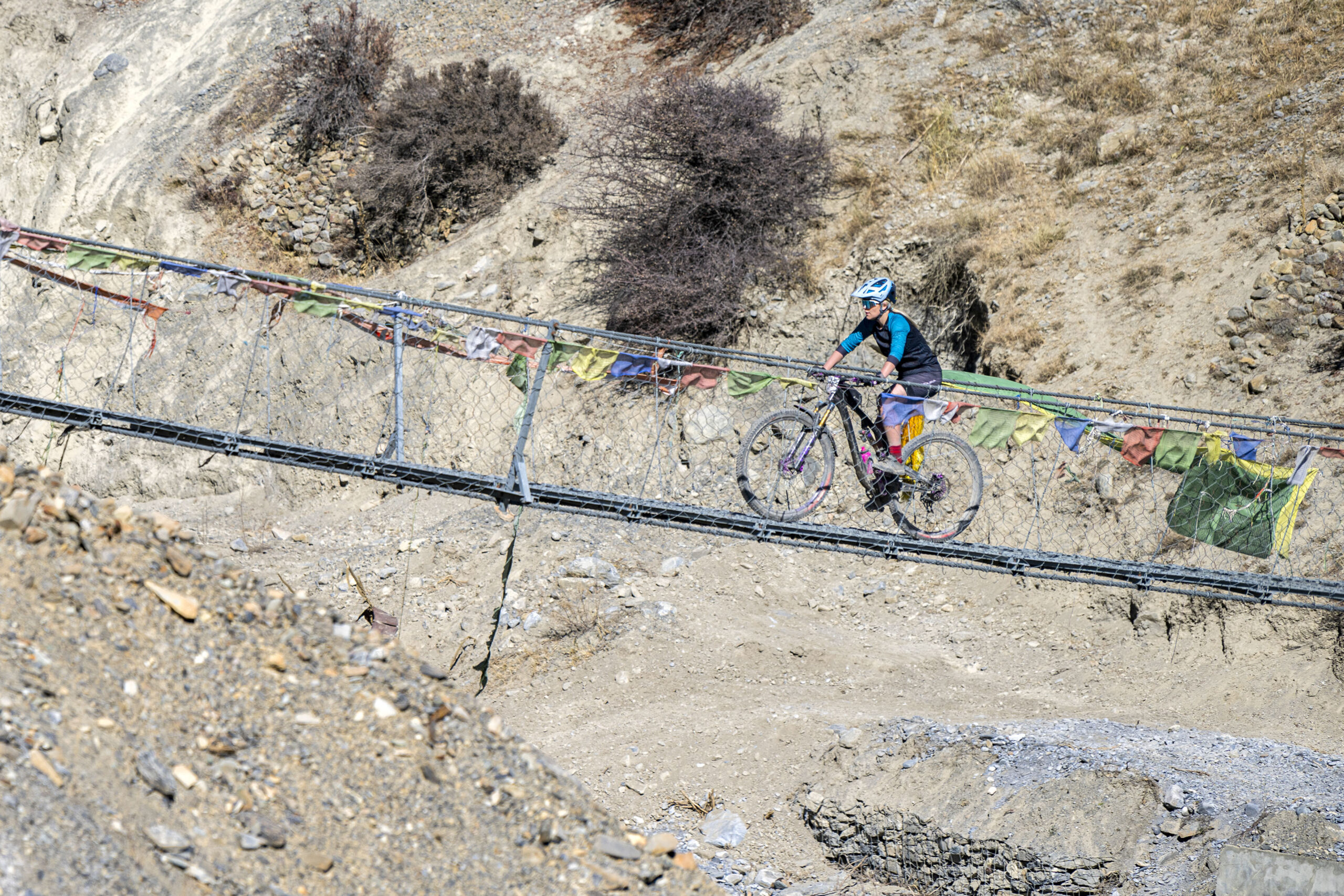
Reaching the top of the climb, I had the pleasure of riding with one of the local Nepalese woman racers, Sunita Shrestha. We got a little lost at the top of the climb, adding in a little extra before our GPS units kicked in and told us we were off route. It was time to start the downhill. This is where I fell heavily in love with Nepali mountain biking. I followed Sunita down the sweeping singletrack with a view of ice-covered glistening mountains, beautiful temples, prayer flags swaying in the breeze, and a thick jungle with all the birds and wildlife singing.
The singletrack turned to a rocky gravelly jeep track and we were at the finish line in no time. But the 30km loop claimed the race’s first victim. Unfortunately – and ironically – Yak Attack founder Phil had a nasty crash which ended in an X-ray for broken ribs. On doctor’s orders, he withdrew from the race.
The grueller
Stage 2 climbed 3,094m over 62km, they don’t call it the ‘grueller’ for nothing. It was the one I was most apprehensive about, as seven weeks before the Yak Attack I crashed on the Top Chief downhill track in Fort William and injured my knee. After intense physio, I was okayed to race. With my bag packed with knee tape, we hit stage two. This was a climber’s dream with nothing but uphill ahead; it was all about spinning those legs. Hello 12-speed, you are my best friend today!
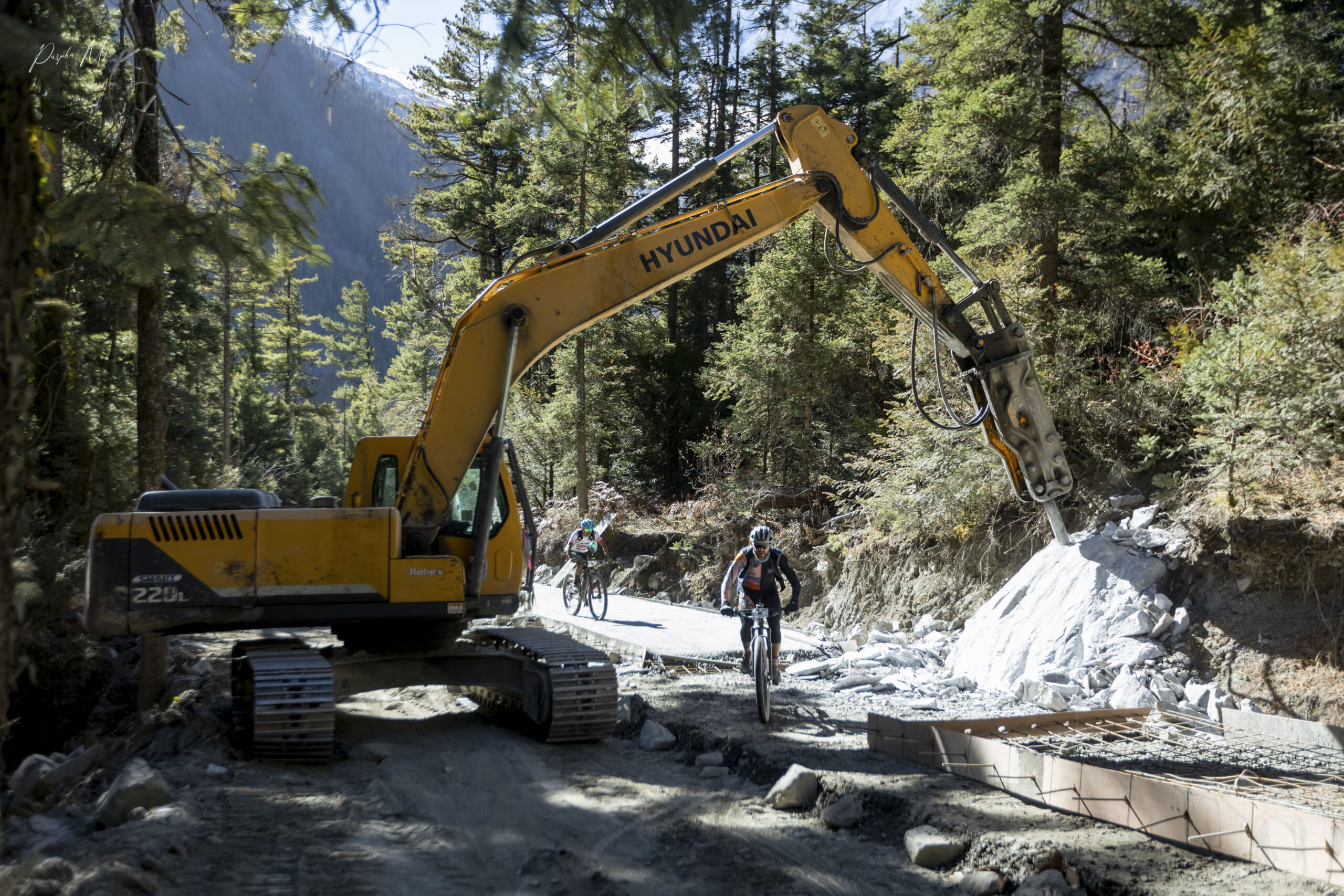
Leaving Besisahar behind with its small town mod cons, the higher we climbed, the smaller villages became and the bigger the landscape grew. The jeep track we were riding on started as a relatively good gravel road with the odd loose boulder. This changed to a sheer-sided rocky track that clung mercilessly to the valley side. The vastness of the exposed rock and the sheer drop were imposing and I was glad to be on my bike and not in one of the jeeps carrying all our kit bags to the next village. But these rock faces did make for some of the most beautiful waterfalls you could ever see. They splashed down and engulfed the road, creating rivers to ride through and massive potholes.
We arrived at Chame, our home for the night and as the sun set the temperature dropped from a high of 30°C to -5°C. That night, like most nights, our meal consisted of the Nepalese staple of Dal Bhat. This selection of little dishes of spicy curry with lentils, vegetables and steamed rice is served on a large silver platter and refilled as much as you like.
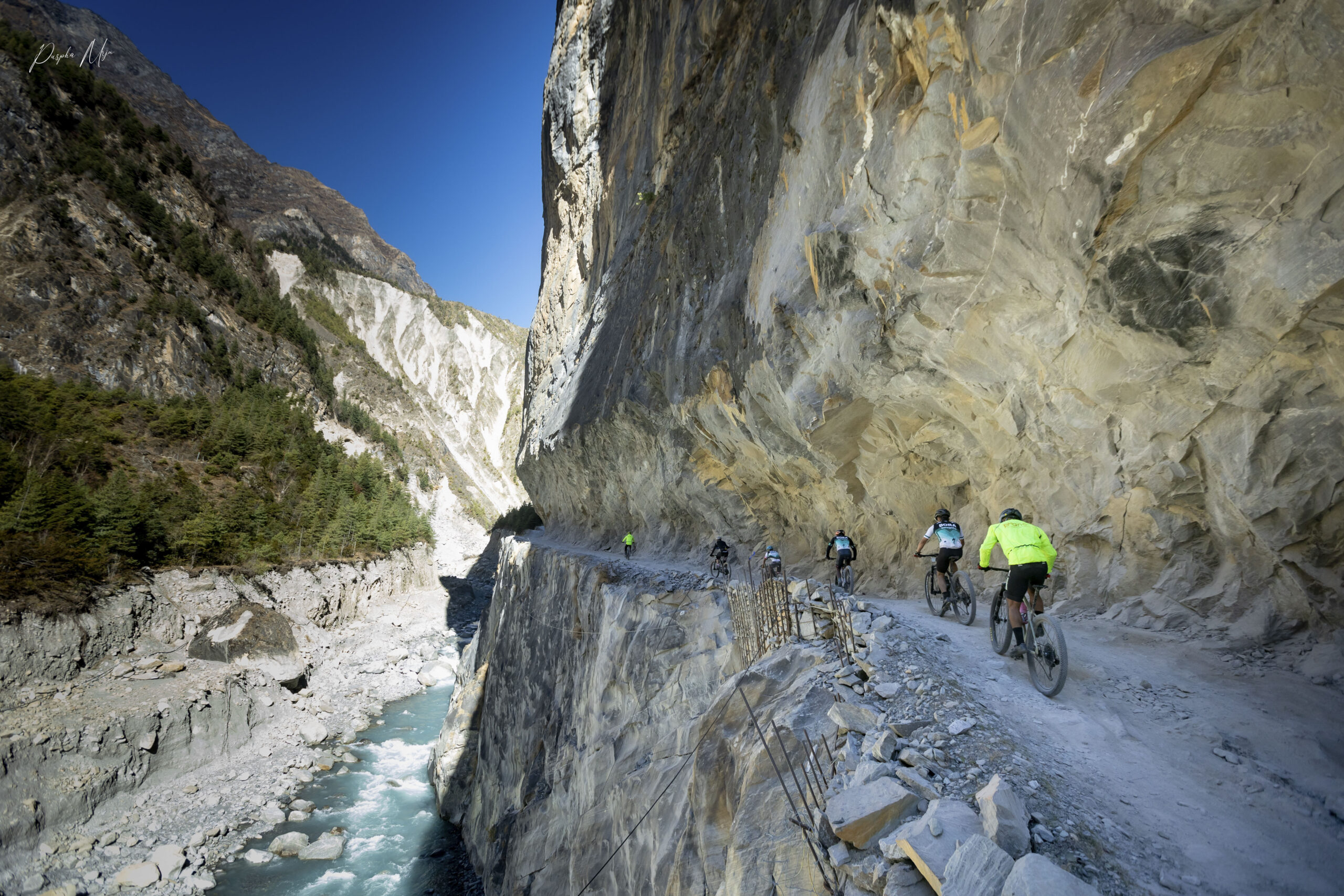
Passing through
Stage 3 sounded like an easier one, with only 1,800m of climbing over 36km ending in Manang. But at 2,700m in Chame we were firmly into altitude, where everything feels a little harder.
Over the 15 years of the Yak Attack, there had been major development of the jeep track road we raced on to Manang. For the first few years, it was a 50% hikeabike and now it’s only around 5%. This has made it more accessible for people to get to Manang but has had a big impact on the more remote villages en route, which rely heavily on the passing tourist trade. Now trekkers tend to take a six-hour jeep ride to Manang, and as we climbed up through these wonderful rural villages they almost looked abandoned in places.
That day was a hard one for me. It was the first day I had to tape my knee and realised I would be in pain for the rest of the race. Feeling a little deflated, I was passing a woman hiker when she stopped in her tracks and called out “Hey it’s great to see a woman on a bike out here in Nepal… woman power!” This little sentence jolted me back to reality and made my day.
Going to the dogs
Manang has flourished with the influx of tourism. Despite its remoteness, high in the mountains, it has laundry services, hot showers, restaurants and even bakeries famed for apple pie. But, despite these comforts, many at breakfast were not refreshed. During the night the street dogs of Manang kept many awake, and a lot of racers were feeling poorly with flu-like symptoms that no one could pin down the cause of. Was it a bug, the altitude, or something they ate?
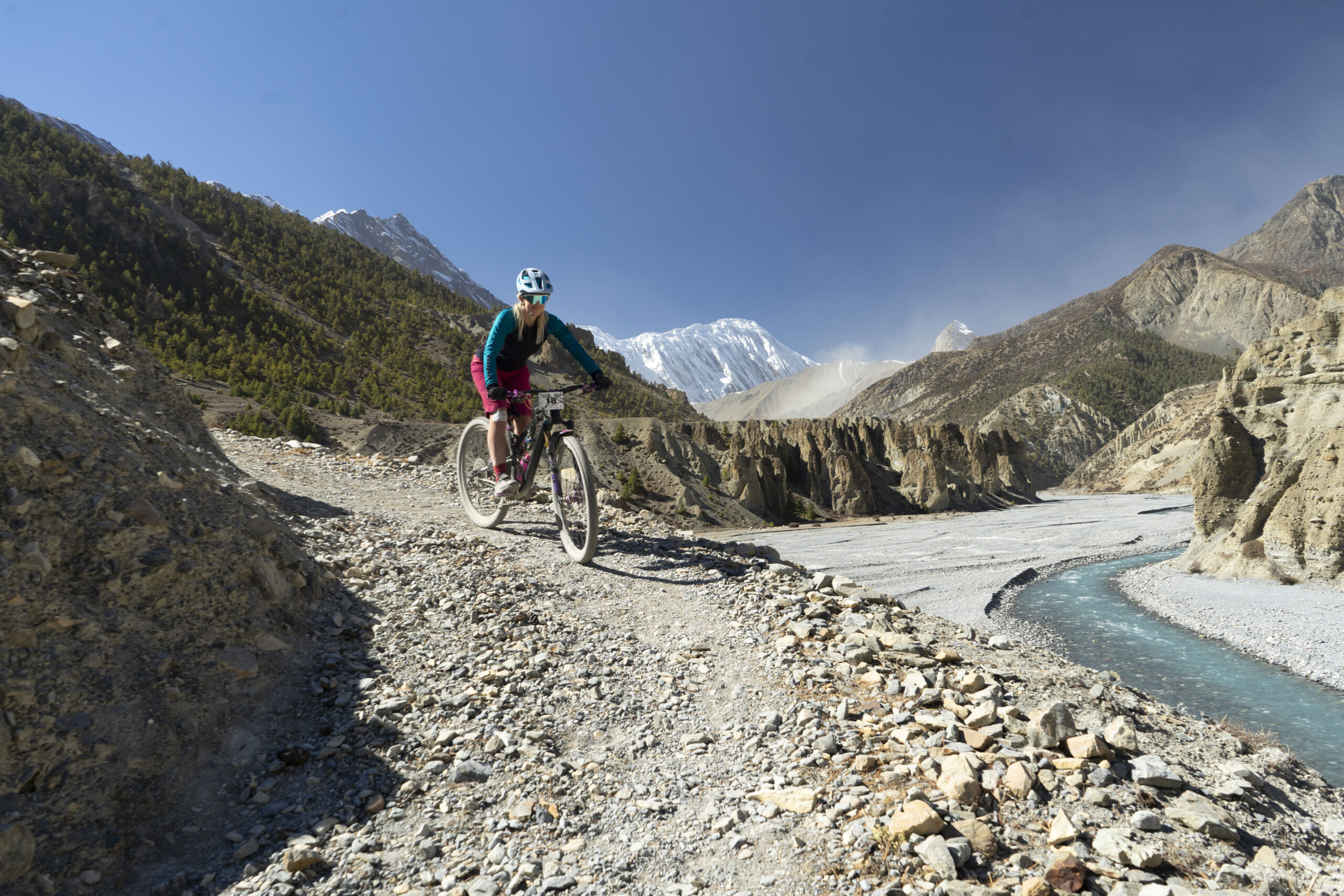
The stage was a cross-country 3-lap loop around the village of Manang, totalling 14km with 584m of climbing. I realised my knee pain was going to slow me down, and to add insult to injury I also had Achilles pain. All strapped up I looked like the walking wounded, but it didn’t stop me.
The uphill was a hikeabike for most of us and gave the first real taste of how altitude affects you when racing. I was joined by Tania, one of the other riders, and enjoyed having another woman to suffer with. I loved this about Yak Attack – yes we were all competing against each other, but there was a real family element to the race. The downhill section was good with a mix of singletrack with the bonus of riding through the village where you could fly over cobblestones and ride down steps, then over suspension bridges covered in prayer flags and down some nice steep loose trails.

After this we had a rest day and –while I would have loved to have slept – it was impossible to waste the time sleeping when it might have been the only chance I would ever get to explore Manang. A must-do thing there is to hike up 438m of one of the surrounding mountains to be blessed by a nun for safe passage over the Thorong La pass. She said a prayer for us and gave us a bracelet meant to protect us on our journey.
Higher, slower
Stage 5 was 16km with 1,040m of climbing, the shortest day on the bike, but at altitude everyone is slower, making for a long day in the saddle. After breakfast, we watched as our bags were placed onto the mules that would take our kit up to Thorong Phedi where we would stay that night. The local women’s group performed an unexpected ‘thank you and good luck’ ceremony. Without events like the Yak Attack, the village would not make money and they were grateful for our presence.
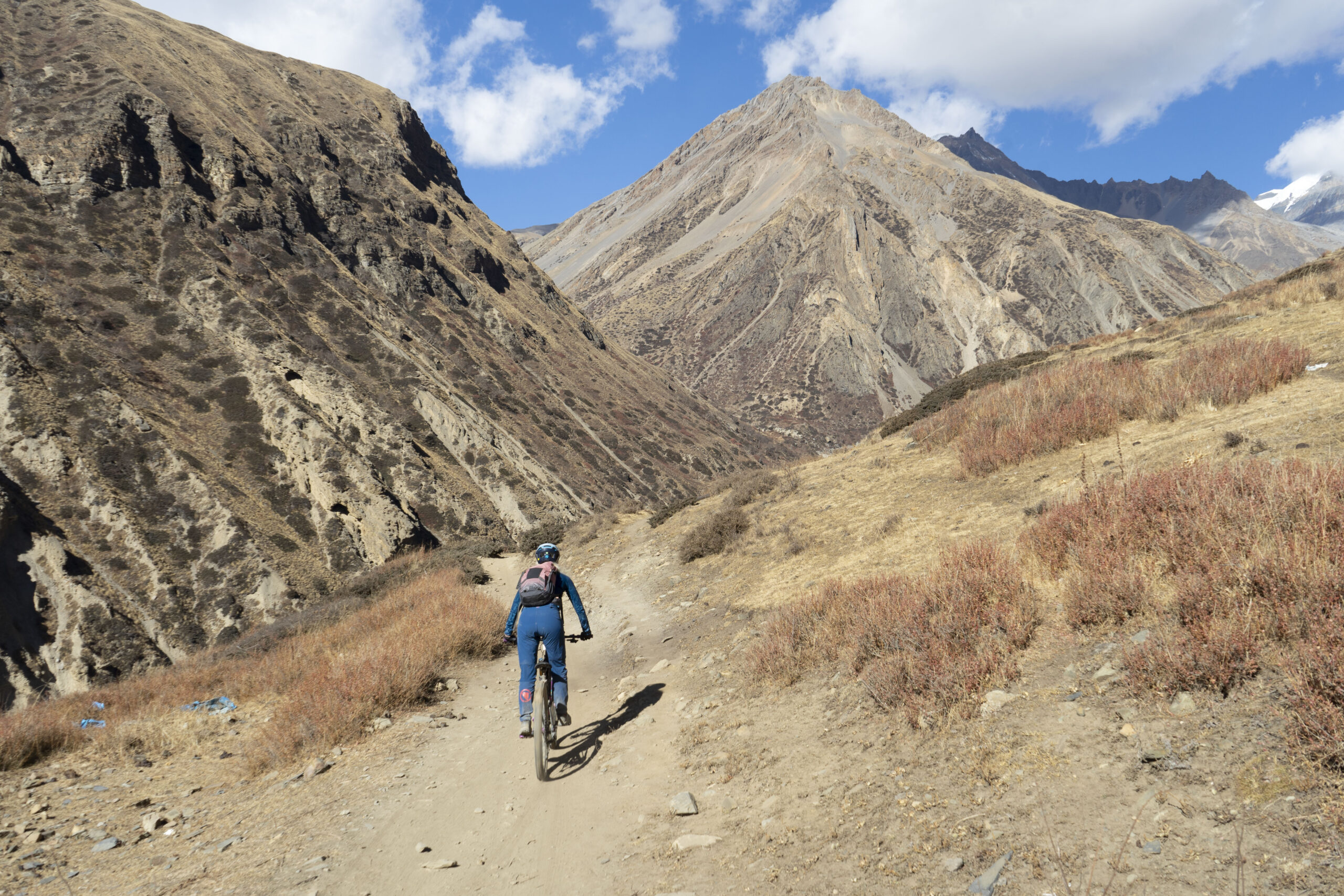
The terrain was a singletrack hiking path with suspension bridges through a high-risk landslide area. I have a fear of heights so every suspension bridge was an added challenge for me. The bridges are very long and, while they might be safe, they have seen better days and swing violently in the winds, which up in the mountains are constantly gusting. But the bridges also offer the best views of the towering Himalayan peaks. Not long after the start we were joined by a lovely dog who came with us for the full 16km. Her presence helped calm me over the bridges, and her company was rewarded with biscuits.
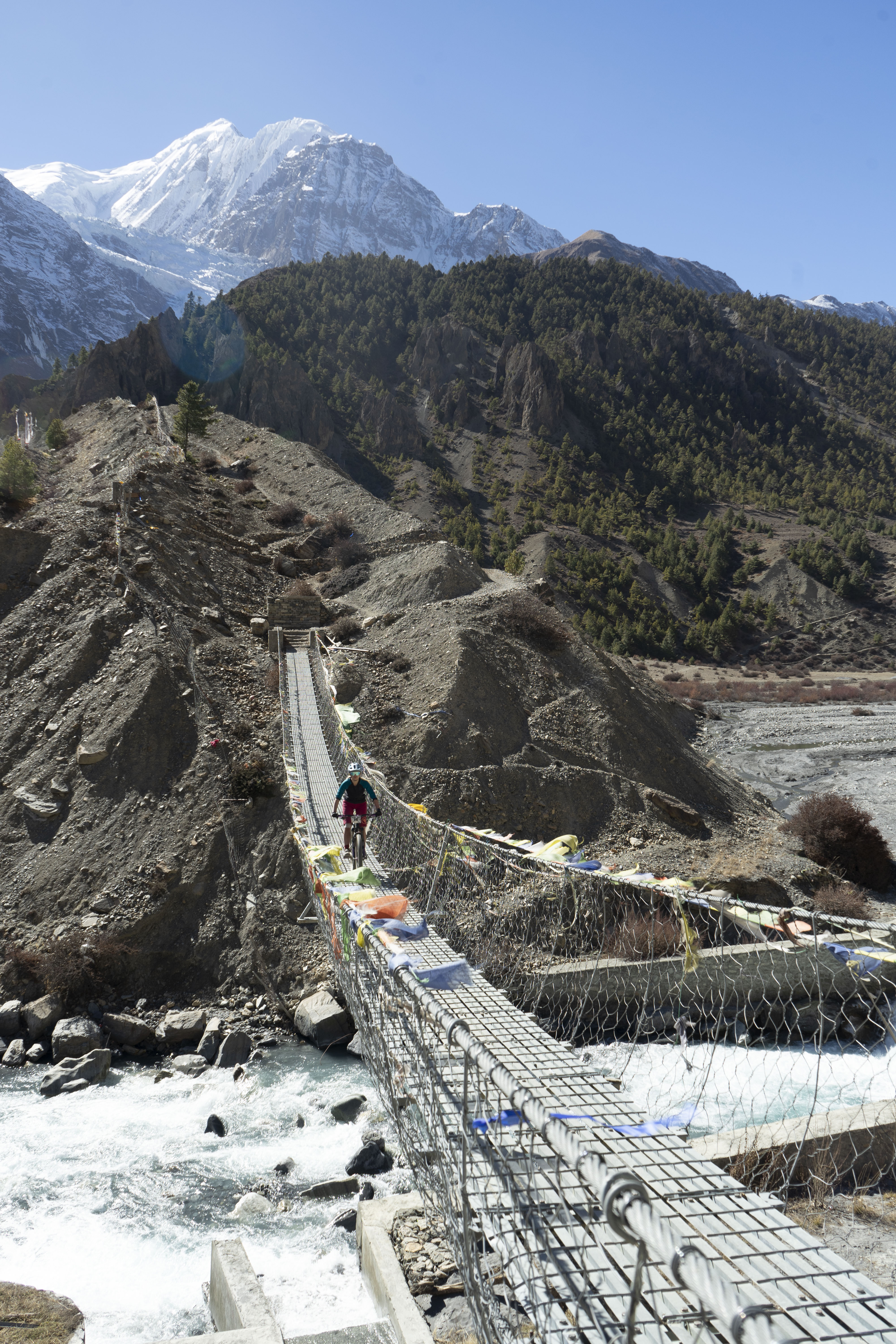
A low high point
We arrived at Thorong Phedi where the little tea house we stayed in was basic and the surrounding barren rocky grey mountains wouldn’t look out of place in a Star Wars movie. This was the most remote place I have ever been. The rooms were small with a double bed, bare wooden floors, no heating and with a hole in the floor as a toilet. The main building had a yak dung burning stove, and we all crowded around the fire to keep warm. The food was basic but received gratefully before we headed early to bed. It was a cold sleep at -15°C, with alarms set for a 4am breakfast and a 5am start for stage 6. Overnight I had no altitude symptoms; I was just a little tired, but it was to be expected. Unfortunately, that was not the case for others and most people felt the effect of the altitude. One of the women was very poorly and after seeing the doctor was told she could not race the pass and had to take a horse over instead.
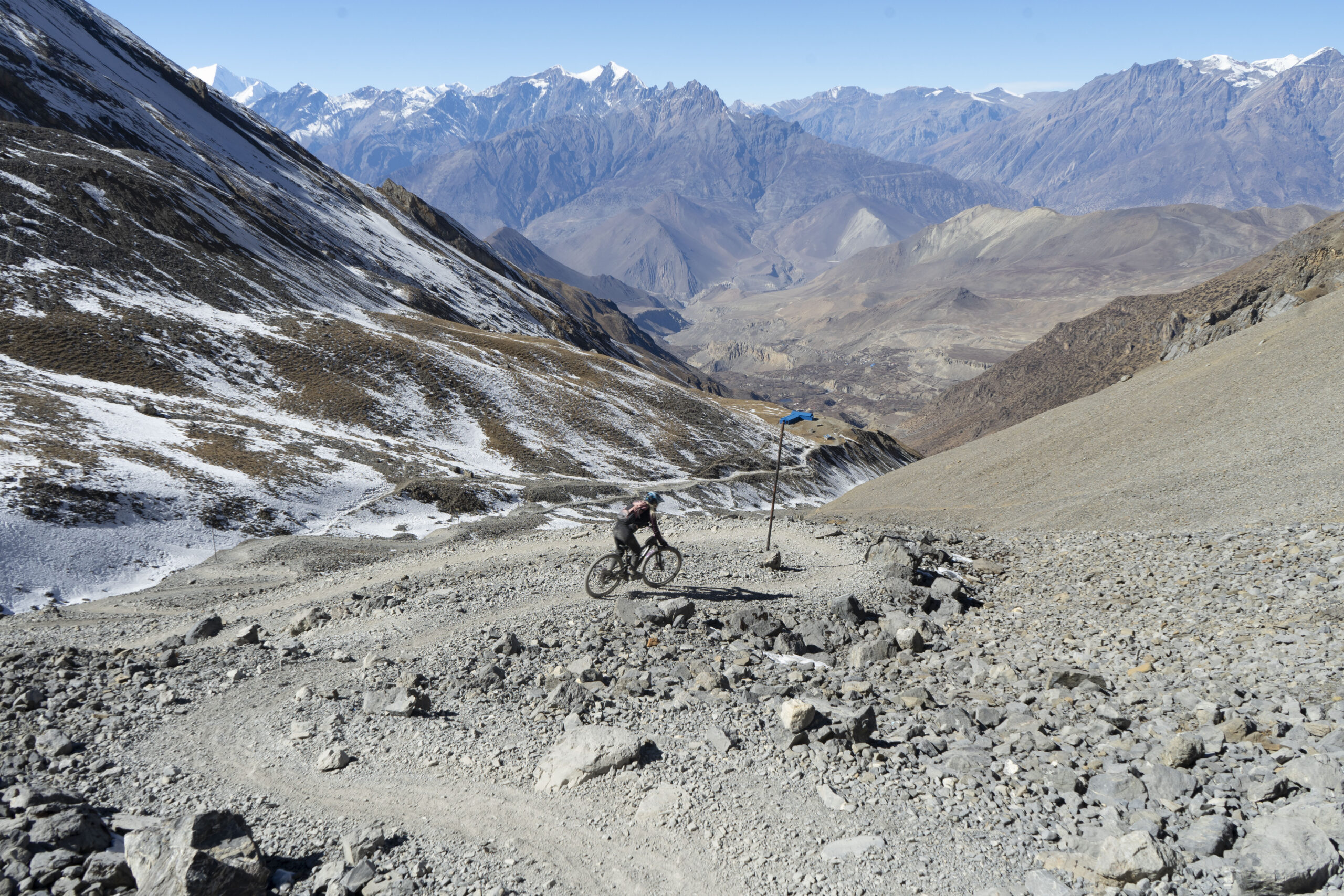
That was the hardest stage for everyone as it was the highest point of the race up to the Thorong La pass. This is a hikeabike of 1,036m to reach the height of 5,416m at the top of the highest trekable pass in the world. It was so cold my hydration pack started to freeze, and as I negotiated the steep loose rocky switchbacks I started to feel unwell. It came on gradually and my head felt like it was going to explode with the pressure. I dropped my pace, took some painkillers and managed to continue through terrain which is what I imagine the moon would look like if it had a scattering of ice and snow. Eventually, the pain became unbearable and I had to take a break.
Luckily I was not on my own and Hugo monitored me. Shortly after I sat down I was joined by Phil and Corinne, the organisers of Yak Attack, who were hiking over the pass. I somehow managed to find the strength to continue and push on. I remember seeing the prayer flags flapping in the wind that marked the top of the pass and bursting into tears. Nothing could prepare you for the emotional toll a race like this could have on you. I had trained hard; I knew my body would be pushed to its limits and I knew mentally it would be tough, but the reality is different. Feeling so unwell, I didn’t think I would make it, and that was my greatest fear. But I did it!
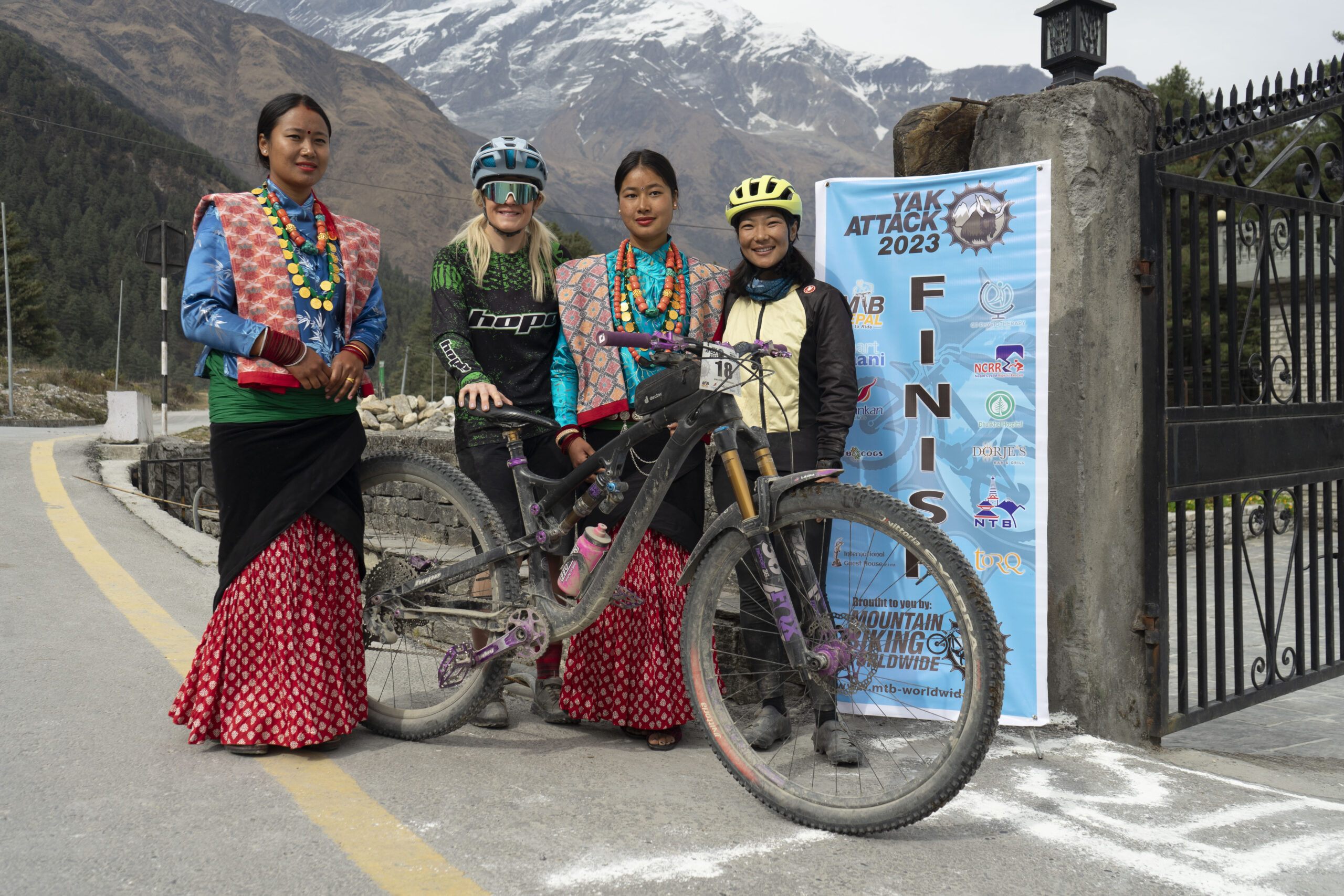
With the cold, gusting wind at the top of the pass, there was no time to hang about longer than to take a few snaps. I wish I could say I enjoyed the descent, but altitude sickness is a cruel mistress and I was so poorly that it felt like a chore. I have unfinished business with that downhill. Arriving at the finish line in Kagbeni with only 28km on the GPS it all seemed a bit unfair.
Thrills and devastation
The next morning I woke feeling so much better. I was refreshed and it was going to be a special day: the enduro loop in Kagbeni. This was my favourite day of the race, 35km with 1,560m of climbing and the best downhill section in Nepal. Climbing up steep terrain past temples and mountains and leading to twisting and winding singletrack, it had everything I dreamed of. The downhill was fast and flowy with rock features, jumps and steep loose sections. Hugo and I were very excited because we are more used to this style of riding. It was all about the timed downhill for us but unfortunately Hugo punctured. Nevertheless, we still had time to explore the village after the riding was done.
Kagbeni had a major emergency in August 2023 when a river blocked upstream by a landslide suddenly burst its banks. The people were evacuated but houses and buildings were destroyed, making 150 people homeless and causing immense damage to the village. Walking around, we could still see the devastation. A Kagbeni local told me how the main road was cut off and getting supplies to the village was hard. They started rebuilding as soon as they could. One of the villagers’ main concerns was that visitors would stop coming and that would impact them even more. The village relies heavily on the income from the tourist industry and, as we were one of the first big groups to come since the flood, everyone was thankful we were there. With under 30 racers, the Yak Attack is a relatively small race, but it has a big effect on small places like Kagbeni. Everywhere we stayed we were welcomed and also told how sad they were to be losing this vital race.
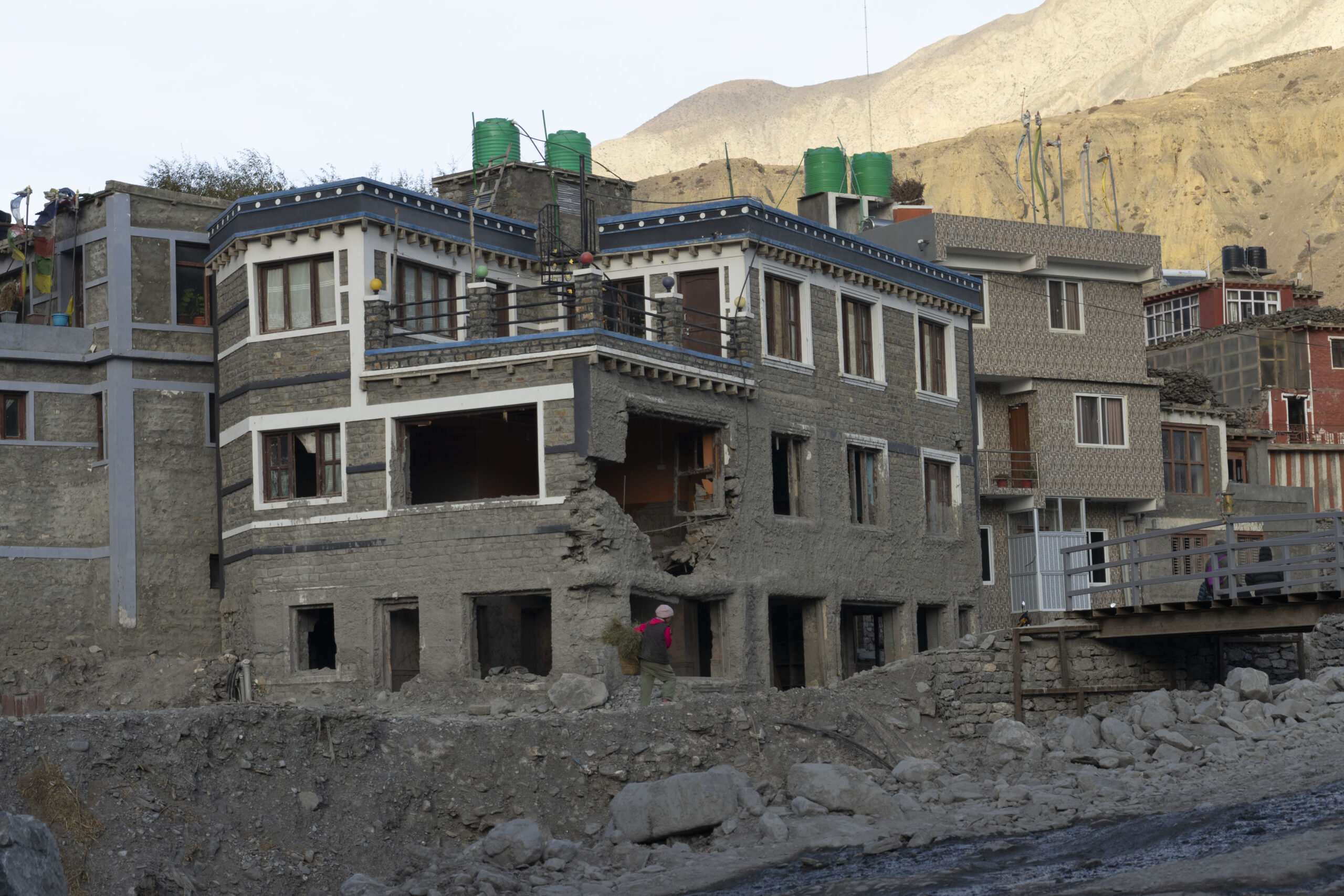
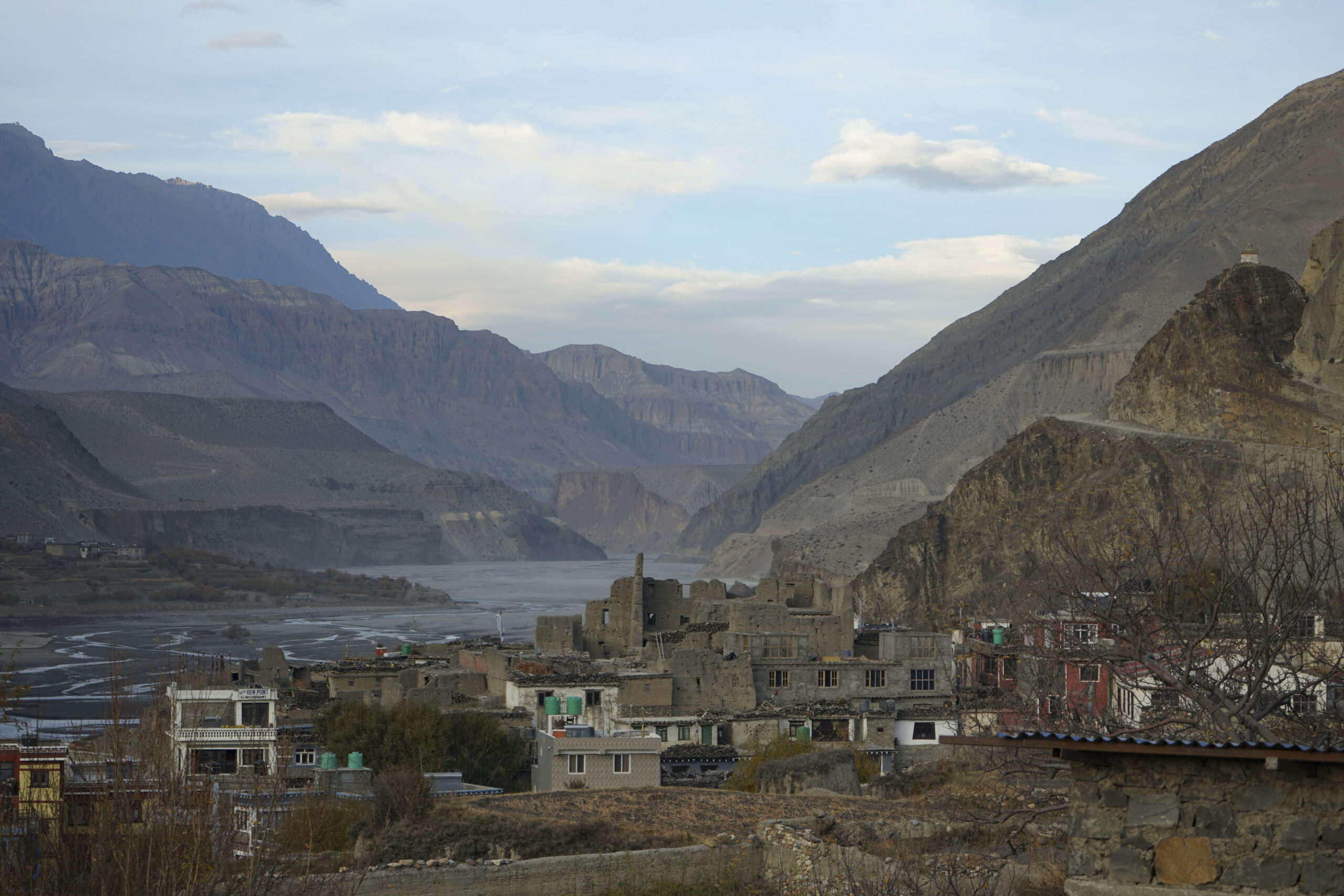
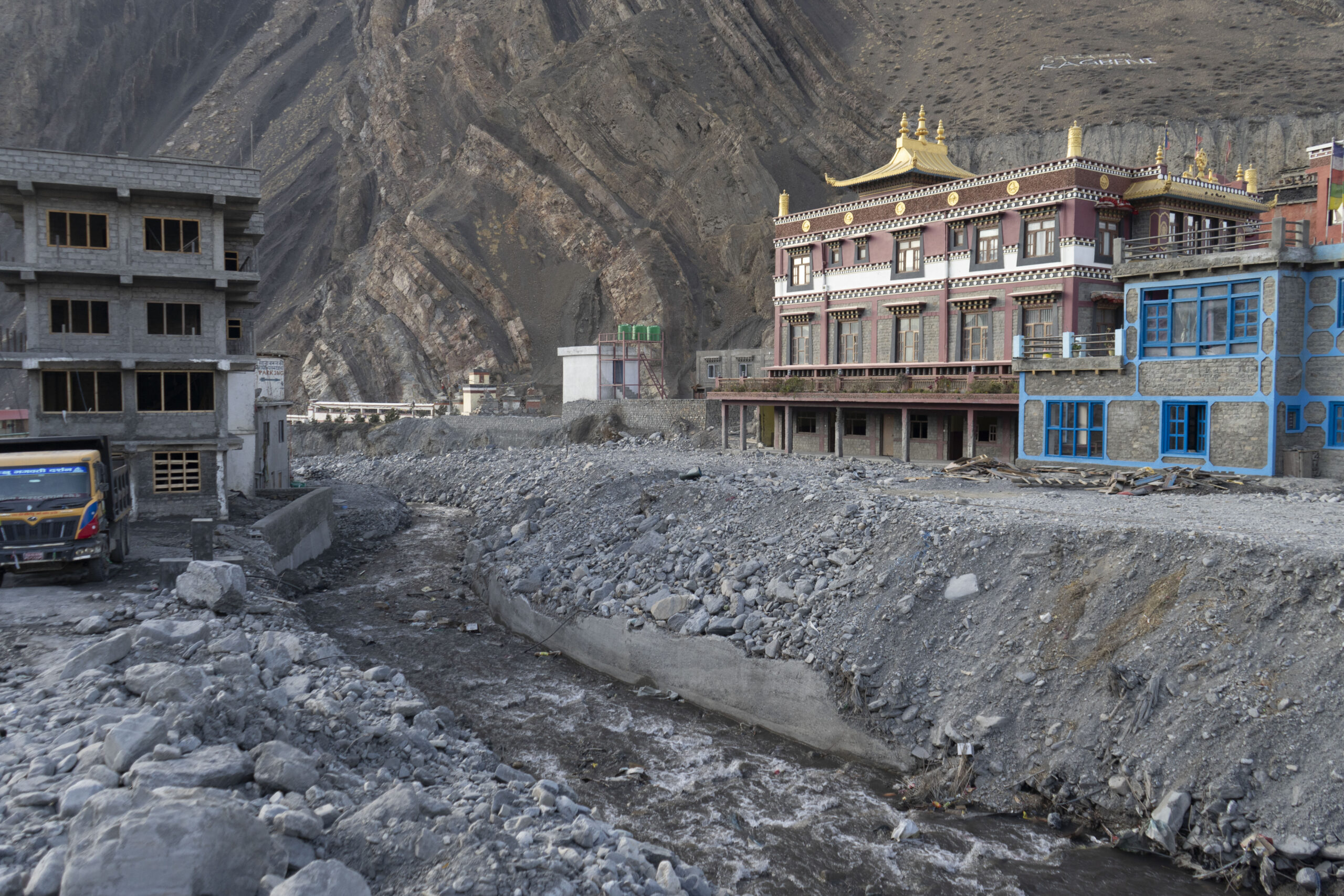
Nepal, due to its landscape and geography, has unfortunately had many natural disasters. The 2015 earthquake caused catastrophic damage and lives lost, though today there is little reminder of this disaster. But after speaking to Ajay, one of the Yak Attack organisers, I learned how mountain bikers played a vital role in the rescue efforts after the 2015 earthquake, managing to bring much-needed supplies to the remote area that only a mountain bike could reach. This is where the Nepal Cyclists Ride to Rescue charity was formed and has continued to evolve and help people in need in Nepal. After this conversation, leaving Kagbeni was bittersweet. It was hard to move on knowing how much they rely on tourism to help rebuild.
The final ending
With 48km and 1,050m to ride, stage 8 was the official end of the race – time to get it done and see the finish line. There was a good mix of jeep tracks, a small hard-packed road and lots of singletrack. I was a mixed bag of emotions – delighted to have completed this epic race, but also so sad that this was it. There was a real sense of finality for the racers, and what this meant for all the Nepalese people we had met along the way.
The Yak Attack might be finished, but it has left a lasting legacy. It has put mountain biking the Annapurna Circuit on the map. If you have ever seen mountain bikers doing this route, this is largely thanks to the foundations put in place by Yak Attack organisers Phil and Ajay from Mountain Biking Worldwide and Phil’s wife Corinne. They will continue to support Nepalese riders and promote mountain biking in Nepal, continue to run cycling tours there and hire mountain bike guides from Nepal to run these while paying them a fair wage. These guides can then train in the off-season to compete at both national and international level.
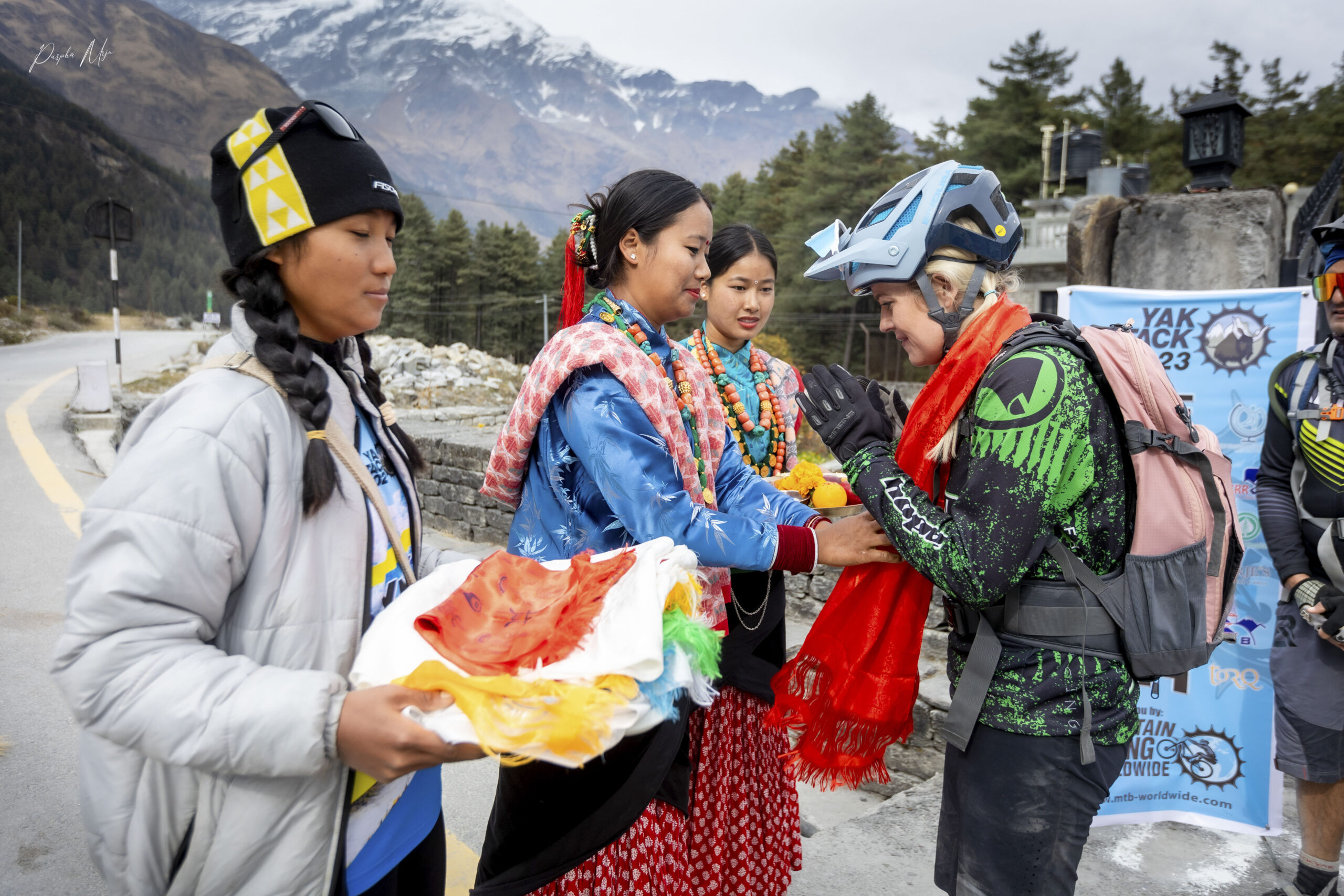
While I was taking part in the race I was interviewed by Tara Shrestha, a Head Lecturer at Tribhuvan University, who is conducting a survey into the impact of the race leaving Nepal. It is his opinion that the loss of this race will have a big effect on the local communities and that mountain biking is a big opportunity for Nepal to grow tourism. After taking part and seeing first-hand the impact this race has on the rural communities it travels through, it is a hard pill to swallow that it was the final race, and there will no longer be that much-needed income for these villages. The Annapurna Circuit has been put on the map by the Yak Attack. Though it has ended, I hope this doesn’t spell a huge step backwards for the region and mountain bike racing in Nepal.









